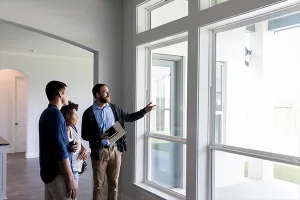
For decades, National Association of REALTORS® members have been at the forefront of state and local advocacy in support of housing affordability. The availability of affordable housing is crucial not just to residents but to businesses that rely on a local workforce. Today, many states are looking at comprehensive reforms to create more affordable housing while helping cities and counties absorb underused commercial space. In September, at the C5 + CCIM Global Summit, hosted by NAR and the CCIM Institute, commercial practitioners got a deep dive into one such effort.

Expanding Options Statewide
The Live Local Act, Florida’s first major affordable housing legislation since 1992, aims to facilitate. the creation of affordable housing through adaptive reuse and urban infill. NAR welcomed one of the architects of the law, Florida state Sen. Alex Calatayud, to the C5 stage to talk about the vision for and expected impact of the legislation, which went into effect in March 2023.
“We have made the specific and intentional change to create a statewide preemption on commercial-zoned property,” Calatayud told the C5 audience.

“We allowed for commercial-zoned property to be able to be converted into multifamily rentals. If at least 40% of the units are workforce-affordable, or 80% to 120% of AMI [area median income], then that parcel can be made available for the highest height in a mile; the highest density within the entirety of that jurisdiction, municipality or county; and the highest floor-area ratio x 1.5 of that jurisdiction. And, so, the Live Local Act itself is named after this concept that we can reimagine our communities so that people can live where they work.”
For commercial real estate practitioners in the state, the law gives their clients new options, says Fernando Arencibia Jr., AHWD, PSA, broker and co-CEO of Avanti Way Commercial in Doral, Fla., who attended the Summit.
“I have a client who was getting ready to list a commercial parcel around the time that the Live Local Act was becoming a reality. Once it was law, I sent him the details and he reevaluated his parcel. Instead of selling it, he is going to build a mixed-use project. So now a piece of commercial land that may have gone undeveloped for years, even though it was going to change hands, will now be activated with housing and mixed-use retail,” says Arencibia. “That’s a great example of how a piece of legislation can encourage new housing units to come into a market that desperately needs it. It’s impactful.”
Florida Realtors® was involved in supporting the Live Local Act, says Tom Butler, public policy communications director for the state association, “and we continue to champion the legislation at every available opportunity.
Federal Government’s Role

Sharing a national perspective, Sharon Wilson Géno, president of the National Multifamily Housing Council, said federal incentives could be an important factor in making adaptive reuse projects work. But she struck a cautionary note about near-term prospects.
“Banks and lending institutions are going to need to give as much flexibility as they possibly can over the next couple of years and to be creative about how we take real estate assets that have lost some value and move forward,”Wilson Géno said. States and cities may also need to rethink their tax structures, she said, because “in many communities that commercial rate is significantly higher than that residential rate.”
Wilson Géno said public and private-sector collaboration can help address the multifaceted challenges facing the commercial real estate industry.
NAR Director of Commercial & Policy Oversight Erin Stackley, who facilitated the conversation, concluded with a call to action for real estate professionals to engage with policymakers at all levels of government









